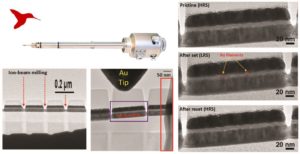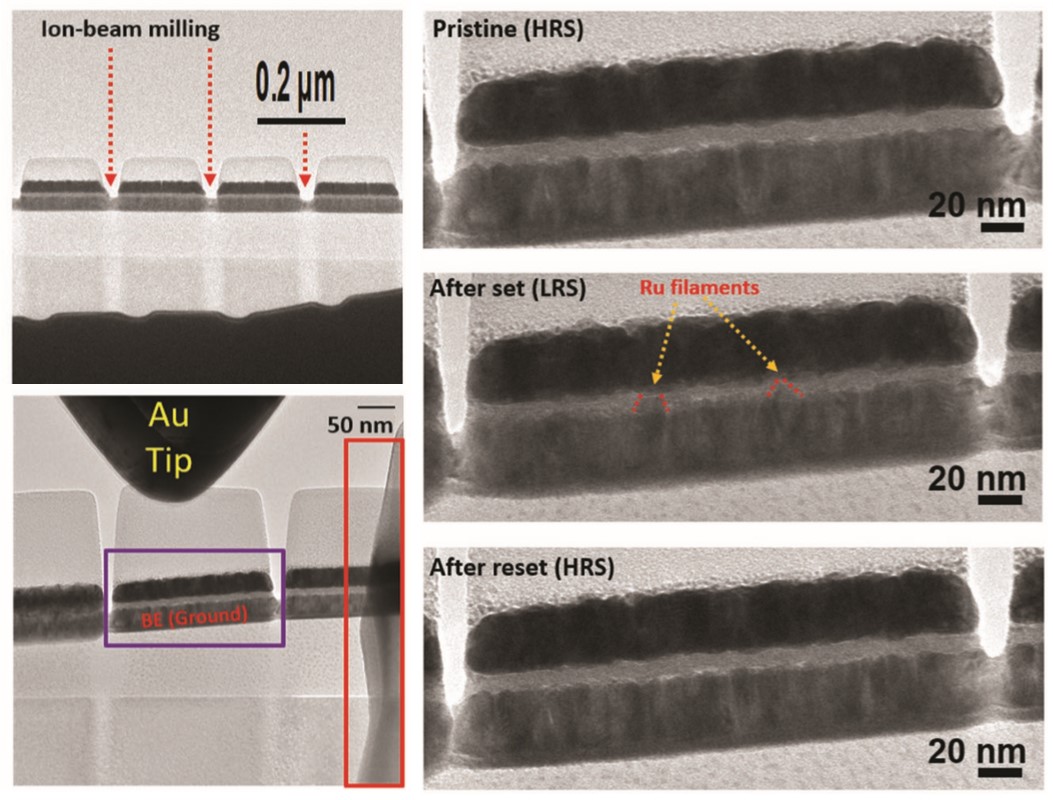Researchers at the University of Massachusetts, Amherst, Argonne National Laboratory, Korea Institute of Science and Technology, and Hewlett Packard Labs developed an electrochemical metallization-like memristor. They used in-situ TEM with a Hummingbird Scientific nano-biasing manipulator to study Ru as a new type of mobile species for memristors to achieve low switching current, fast speeds, good reliability, scalability, and analog switching properties. The report their findings in Advanced Materials.

In-situ TEM of the memristor structure. Left: Bright-field TEM image of the fabricated individual nanopillar type in situ TEM samples and conformation of contact between Au tip and top electrode while applying bias. Right, top to bottom: Cross-sectional in situ TEM image of Pd/Pt(top)/Ta2O5/Ru(bottom) structure device in a pristine state (High Resistance State), Low Resistance State (LRS) after switching, and High Resistance State after switching off the LRS. © 2020 WILEY‐VCH Verlag GmbH & Co. KGaA, Weinheim
Reference: Jung Ho Yoon, Jiaming Zhang, Peng Lin, Navnidhi Upadhyay, Peng Yan, Yuzi Liu, Qiangfei Xia, J. Joshua Yang, A Low‐Current and Analog Memristor with Ru as Mobile Species, Volume32, Issue9, 1904599, 2020 https://onlinelibrary.wiley.com/doi/abs/10.1002/adma.201904599
View All News

